These are remnants of our sessions at the wonderful Author Conference at the Leipzig Book Fair, LBM24. As you can see, we really can’t draw. Nonetheless we tried to illustrate sophisticated approaches to storytelling such as:
– figural shadowing
– liminal storytelling
– cyclical and rhythmic storytelling
We hope our participants gained some valuable insights!
Click to develop a better story:

Guest post by Ali Luke.
 Ali Luke is a freelance writer and novelist who blogs about making the most of your writing time at Aliventures. For her best tips on making time to write, sign up for her email newsletter: you’ll receive a free copy of her mini ebook Time to Write: How to Fit More Writing Into Your Busy Life, Right Now.
Ali Luke is a freelance writer and novelist who blogs about making the most of your writing time at Aliventures. For her best tips on making time to write, sign up for her email newsletter: you’ll receive a free copy of her mini ebook Time to Write: How to Fit More Writing Into Your Busy Life, Right Now.
Pacing in fiction is how quickly—or slowly—the story progresses. The right pace for a story depends on its genre. If you’re reading a thriller, you’ll expect a fast-paced read with lots of action; if you’re reading a historical novel or epic fantasy, you might enjoy a slower pace with lots of emphasis on the world of the story.
It’s tough to get pacing spot-on when you’re drafting. It might take you years to write a book that takes just hours for someone to read. What feels “slow” to you as you write might actually go by pretty quickly on the page. Or, you may find that you repeat yourself, going over the same narrative ground multiple times, because you barely remembered what you wrote six months ago.
So, don’t worry about your pacing as you draft. Instead, address it in the redrafts—ideally, with the help of beta readers, but even simply reading over your full manuscript yourself can help you spot areas where the pace feels off.
Here’s what to look for when redrafting your work. (more…)

Guest post by Iris Marsh.
 In this guest post, indy writer and editor Iris Marsh describes how reading novels comparable to your own project can help you hit genre conventions and scenes the audience expects.
In this guest post, indy writer and editor Iris Marsh describes how reading novels comparable to your own project can help you hit genre conventions and scenes the audience expects.
Iris is an editor for indie authors and the author of the YA urban fantasy novel Illuminated. Iris feels everyone has a story to tell, and she loves to help other authors hone their story so they can share it with the world. To her, building the confidence of authors is key. That way, they don’t just have a better story, but they also feel more confident sharing it. Check out her website for tips and her free self-editing course.
You’ve written your story, yet you feel that there are several moments missing. The middle seems rushed or too slow. Or perhaps you’re unsure whether the climax packs the punch you were looking for.
You do know this: the story needs some editing.
But how do you know what’s missing? How can you identify what you need to improve?
Reading a few books in your genre can give you the answers you seek. By comparing them, you’ll find out what elements they have in common and how you can apply these to your own story.
Doing this is a great practice either before you start writing (to help you plot your story) or after you’ve written your first draft (to find out if your story hits the right moments).
In this article, we’ll discuss which books you should pick to read, what you should pay attention to when reading, how to compare what you’ve read, and how you can use this information to improve your story. (more…)

Guestpost by Savannah Jackson of Jericho Writers.
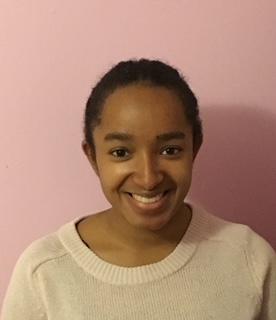 Savannah Jackson is a Digital Content Assistant at Jericho Writers. She has a BA in English Literature and Creative Writing from the University of Warwick. In her free time, she writes poetry, practices yoga, and reads voraciously.
Savannah Jackson is a Digital Content Assistant at Jericho Writers. She has a BA in English Literature and Creative Writing from the University of Warwick. In her free time, she writes poetry, practices yoga, and reads voraciously.
Writing courses have become increasingly popular over recent years, as they are incredibly valuable resources. They offer guidance from experienced tutors who are often writers themselves; provide peer interaction, feedback, and a sense of community; boost your creativity; and enable you to learn about different approaches and techniques.
There are so many different writing courses available that it can be hard to find the one that’s right for you. In this post, I’ll outline the key things to consider when choosing a writing course, and hopefully, that’ll make the decision a little easier.
What to Look Out for in a Writing Course
There are lots of aspects to consider when finding the right writing course for you. Think about what you want to take away from your course experience and use that to help guide your decision. For instance, are you looking for a creative writing course or do you want to learn how to market yourself as an author?
Here are some of the key factors to contemplate when choosing a writing course. (more…)

 Here at Beemgee, we’re into the thought behind the writing of stories more than the writing itself. So we’re all the more pleased that Writer.com approached us to talk about character development. While their speciality is AI-assisted text generation for companies, in their guest post, they have some good general advice on creating fictional characters. Thanks to Nicholas Rubright for this article. Nickolas is a digital marketing specialist and expert at Writer. In his free time, he enjoys playing guitar, writing music, and building cool things on the internet.
Here at Beemgee, we’re into the thought behind the writing of stories more than the writing itself. So we’re all the more pleased that Writer.com approached us to talk about character development. While their speciality is AI-assisted text generation for companies, in their guest post, they have some good general advice on creating fictional characters. Thanks to Nicholas Rubright for this article. Nickolas is a digital marketing specialist and expert at Writer. In his free time, he enjoys playing guitar, writing music, and building cool things on the internet.
Writing characters with whom readers can identify and empathize should be the goal of every writer, but it’s not a simple task.
To fully grasp a character’s motivations, desires, and anxieties, writers must dive deep into the character’s psyche. Character flaws and strengths work together to build a solid character.
But what is the most effective way to develop a character? And how can you establish a connection between your character’s dramatic decisions and the story itself?
Your characters are the heart and soul of your story. Thus, before you can write a single word, you must first understand your characters.
When it comes to character creation, you have several choices to make, and each choice affects the story in its own way. You must, however, choose what works best for your character.
While an unexpected detail can make the character more interesting, if it isn’t chosen carefully it can damage the character’s believability and ruin your reader’s immersion in your story.
Here are some guidelines and tricks to help you successfully create mouldable character templates for your story.
So, let’s dive in! (more…)
 Today’s guest post is by author Stefan Emunds.
Today’s guest post is by author Stefan Emunds.
Stefan’s favorite genre is visionary fiction – stories that have an enlightenment dimension. Enlightenment and storytelling have interesting parallels, which prompted Stefan to write a book about storytelling – The Eight Crafts of Writing.
Get a glimpse of his approach to story craft in his article.
Art and Craft
Storytelling is both art and craft, authoring and writing, plotting and pantsing.
1.1 Art and Authoring
Art is creativity. Creativity requires receptivity to the Muse and its inspirations.
Inspirations arrive as thought-images, which writers put into words. How to turn thought-images into words and assemble those into a structured story with vivid characters and an engrossing world is a matter of craft and skill.
1.2 Craft and Writing
The literal meaning of Kung Fu is a discipline achieved through hard work and persistent practice. Writing is Kung Fu.
Craft gives form to inspirations. Forms limit. Writers love the artistic side of writing, less so crafting, in particular, Story Outline. Writers are prone to procrastinate crafting.
But no limitations, no story. No canvas, no painting. No net, no tennis.
Understanding the difference between freedom and dominion helps to appreciate the constraints of craft. Freedom is a means to an end. We want to be free to do something, for example, to write a book. That’s all there is to freedom. Dominion, on the other hand, is mastery of structure. (more…)

Guest Post by KT Mehra.
KT Mehra knows a thing or two about writing from her own experience, not only as an author but as a supplier to writers and authors of fine stationary, in particular fountain pens. Not only that, she is digital savvy too.
Back in 1999, KT and her husband Sal started a small web company to create websites for local businesses and provide internet access. They both had a passion for fountain pens, and one day KT, in an excess of enthusiasm, ordered far too many from a pen company. Just for fun, she decided not to return any of them and instead asked her team to design an e-commerce website to sell the extra pens.
To everyone’s surprise and just like that, the website came together quickly and was an instant success.
KT believes that in the modern digitally saturated world, it’s more important than ever to stay true to your thoughts and create something tangible. In that spirit of creation, she feels that something as elemental as putting pen to paper is ever more essential.
Despite offering a digital tool for authors, we couldn’t agree more!

Develop a romantic relationship that your readers will engage with and root for.
Most of the romance novels you love so much use certain secrets to hook their readers in and keep them engaged.
Learning the secrets to create such compelling romance novels will help you perfect your characters’ love story.
The Basics
The best way for your readers to relate and root for your relationship is for you to make it realistic and dynamic. To build the foundation of any great love story, you need to have a few things down first. (more…)
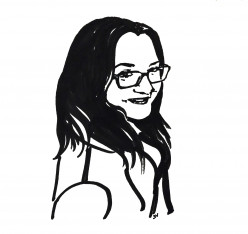
Guest post by Rachael Cooper.
Rachael Cooper is the Publishing Manager for Jericho Writers, a writers services company based in the UK and US. Rachael has a Masters in eighteenth-century literature, and specialises in female sociability. In her free time, she writes articles on her favourite eighteenth-century authors and, if all else fails, you can generally find her reading and drinking tea!
What is a manly novel, or a womanly novel for that matter?
Does it matter that 1984 was written by a man, or that a woman penned Harry Potter?
Like anything, people lump writers into stereotypes and groups, along with their work. In some ways, this makes it easier to categorize and begin understanding their novels. In others, it can handcuff an audience’s reading and pigeonhole writers.
Women have been writing, and out writing, men for millennia. From Sappho to Toni Morrison, Jane Austen to Virginia Woolf, myriad women writers have changed the world with their words.
Out of all the novels written by women, these are three of the most “manly” of all, the ones you’d bet were written by men.
 (more…)
(more…)
In the summer of 2015 in a run-down part of Berlin, three guys made their way to a notary.
They were in the process of founding the company Beemgee GmbH. There was no product yet, but they did share a conviction and a vision: to help writers and storytellers everywhere conceive, develop and outline their stories.
Today we are proud to celebrate five years of Beemgee with a whole host of new features. Premium users can now access a dozen new attributes in the PLOT and PITCH sections of the Beemgee story development tool.
> > NEW PLOT FEATURES
How ever you work, whichever is your favoured process, you can do it in Beemgee.
The additional plot attributes live now are:
- Dramaturgy
- Hero’s Journey (new)
- Hero’s Journey (classic)
- Plot Beats
- Story Anatomy
- Audience’ Journey
(more…)



Five years ago, three guys met at a notary’s office in a rather run-down part of Berlin.
They had decided to found a company, and on this day were making the declaration official – although they had no backing and no product. Why?
The circumstances of each of the three guys were quite different. One was employed, the other already ran his own business, the third had just left his job. Two were techies, one was the content guy, the one with the idea.
Looking back on it, what they had in common was the desire for a sense of purpose. Each of them wanted their working life to follow a vision, rather than a loop.
For let’s face it, most work is repetitive. You end up going through the same motions again and again, whatever they are.
But found your own company and you’re aiming at something. You’re pursuing a vision. You set yourselves goals, milestones. You have an ideal state you wish to achieve. And probably no idea what you’re letting yourself in for.
In short, when you found a company you become the protagonist in your own story. (more…)
Guest post by Hayley Zelda.
Hayley Zelda is a writer and marketer at heart. She’s written on all the major writing platforms and worked with a number of self-published authors on marketing books to the YA audience. She loves working with teen writers and working with schools on literacy programs.
Writing is a craft that cannot be easily taught and from a young age, many students associate writing with homework and essays. By the time high school swings around, many teachers tell me they’ve given up on getting the majority of students excited about writing.
But I believe there is always a way to motivate and inspire young minds to get excited about writing. After all, storytelling has been in existence since the beginning of the human race. And who doesn’t love stories?
If it were a simple task, I probably wouldn’t be writing a blog post about it. Through trial and error, I’ve found a number of ways to help teens have fun while writing. This doesn’t mean that every teen will fall in love with writing forever, but at least some positive association can be built with the act of writing.
Here are some of my top tips on how to get young people excited about writing.
1. Use writing prompts relevant to what young people care about.
Writing prompts are a great way to get creative juices flowing. The more relevant you make the prompt, the stronger the response you’ll get from a student. (more…)
If you dont know what your story is really about, start finding out now (and don’t stop).
By Amos Ponger

Mankind’s Stories
The human ability of creating stories and the consumption and absorption of stories are very deeply connected to the core of our civilizations. Our efficiency as a species and cooperation in all scales of human endeavor rely on our ability to tell, decode, understand, and believe in stories.
Story has been so important for mankind’s cooperation, development and the way humans have understood themselves that all of our grand evolutions and revolutions – from the agricultural, religious, economic and cultural revolutions, the invention of money and law, the renaissance and humanism, the American, French and Russian revolutions, modernism, to socialism and capitalism – have actually happened through processes of rewriting collective Story. Revolutionaries and evolutionaries from Moses through Jesus, to Buddha, have actually risen upon a grand scale transformation of how humans understand themselves and cooperate with each other. And that has been done by story. Often the seeds of politics of whole centuries had actually been sown by poets, philosophers and prophets. STORYTELLERS.
Your Story
Now, even if you don’t plan on a revolution(more…)
The Writer’s Craft Super Stack.

Here is a resource that can help you hone your writing skills.
(more…)

By Lucia Tang.
Lucia is a writer with Reedsy, a marketplace that connects authors with editors, designers, and marketers. In Lucia’s spare time, she enjoys drinking coffee and planning her historical fantasy novel.
Whether we’re piecing together the timeline for a homicide or puzzling out the intricacies of Newtonian mechanics, cause and effect are crucial to how we make sense of, well, everything. Of course, I say “we” loosely. As writers, most of us won’t actually be catching killers or solving the coefficient of fiction. But still, stories are no exception to this rule: without cause and effect, they fall apart.
At the end of the day, writers should have as tight a grasp on causality as any detective or physicist. It doesn’t matter if you’re working on a doorstopper to rival War and Peace, or a breezy picture book for baby bookworms: you’ll need to craft a storyline that makes sense. This makes your readers want to spend time in the world you’ve created — and ensures they’ll leave it feeling enlightened and satisfied.
Of course, you can get there haphazardly, writing juicy scenes as they come to mind and attacking the chaos of your draft with a merciless red pen. But if you want to save time during the editing process, keep cause and effect in mind as you plot. (more…)

Six Suggestions to Beat the Block.
 By Silvia Li Sam
By Silvia Li Sam
Silvia Li Sam is a storyteller, blogger, writer, and marketing expert. She has built communities of millions of people in education, tech, and non-profit. You can see some of her storytelling credentials on Medium at silvialisam.com, or connect with her on her LinkedIn.
What’s worse for an aspiring writer than to sit in front of their laptop with every intention of writing a great story, only to discover you can’t think of a single idea?
Don’t worry: we’ve all been there. All you need is a dash of inspiration, and you’ll be penning that story – or that novel! – in no time.
But how can you brainstorm great ideas? In this article, we’ll give you a few tips to battle writer’s block and never lose to it again!
1. Write down everything that comes to mind!
You might be asking yourself, “What am I supposed to write about? I don’t have any ideas!”
Don’t worry, the objective here isn’t writing anything exceptional, it’s just getting rid of the white page sitting in front of you. So type into your computer (or write down if you still use a pen and papers) anything you can think of. (more…)

It’s a bundle, and you’ll be laughing.
This is something we haven’t done before.
The Writer’s Craft Super Stack is a collection of digital tools, training, and resources that should help you improve your writing. In it you will find ecourses, ebooks, printable workbooks, access to 7 world-class pieces of software (yes, including Beemgee Premium), and lots more. (more…)
Why a Picture Book Manuscript Always Benefits From Systematic Planning
by Vincent Teetsov
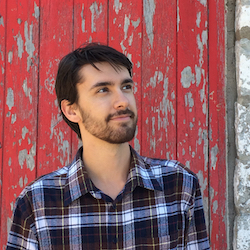
Residing at the crossroads between songwriting, picture books, and non-fiction with a cultural focus, Vincent Teetsov is a communicator with the ambitious goal of inspiring the world to innovate and live meaningfully through multimedia creations. Since 2013, he has released several music albums and books, relating to topics of history, language, and the passage of creativity through time. This has been particularly impacted by his time living across the United States, Italy, and the UK. Since 2015, he has collaborated with illustrator Laani Heinar in creating the children’s stories, comics, and songs for Pumpkin and Stretch.
You can follow Vincent’s latest activity on Instagram here: www.instagram.com/pumpkinandstretch/ and here: www.instagram.com/vincentteetsov/.
Squeezing 90,000 Words Into 1,000
Admittedly, there is less text in a picture book than you will find in a novel. In a picture book, printing specifications typically dictate that there should be 32 pages. This even number allows for the story’s pages to be folded up neatly into a single stack, called the ‘signature’. After printing, the signature is then cut and bound together. Novels have less specific requirements.
With these differences in length, sometimes outsiders to the process of writing will assume that creating a picture book is easier. This is compounded by the fact that most picture books are written for children and use simpler language. Actually, it’s even harder to get this language right than when writing for adults. (more…)
How does a publisher decide which manuscript to publish?
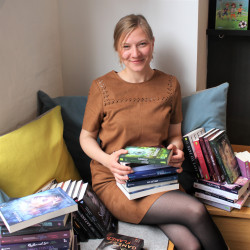 Nicole Boske heads the editorial team at Impress and Dark Diamonds, imprints of Carlsen Verlag.
Nicole Boske heads the editorial team at Impress and Dark Diamonds, imprints of Carlsen Verlag.
Even as a child I tried to discover the magic behind the printed word, and I knew my dream job before I started studying German. I always wanted only one thing: to help great novels find a home – in the hearts of their readers.
In the summer of 2014, my wish became reality. Under the shining grey sky of Hamburg I started as an editor for Impress and Dark Diamonds, both imprints of the famous publishers Carlsen Verlag [German publisher of the Harry Potter books]. As programme manager, a position I assumed in December 2018, my responsibilities also include planning and finalizing the programme and ultimately deciding which novels will be published. A pleasure as well as a challenge. We can’t publish all the manuscripts submitted to us, even if there’s an enormous amount of passion behind every single one of them.
But how exactly do we make a programme?
(more…)
Archetypal Antagonism in Documentary Film and Fiction
by Amos Ponger of Mrs Wulf Story Consulting
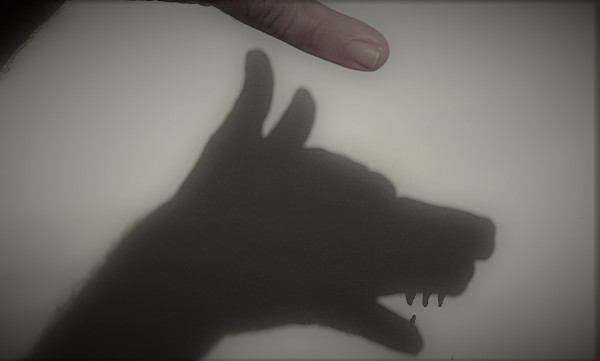
Stories are intricate mechanisms
Documentary film is a powerful genre that draws much of its energy from the material of real-life action. Consuming documentaries, we as spectators often ignore the fact that documentaries, like fiction, are a constructed clockwork of storytelling. Since the digital revolution, the amounts of raw material for documentary productions have probably grown tenfold, shifting much of the dramaturgical construction work to the editing room. Dealing with hundreds of hours of material you may say that 90 percent of the editing work in documentary film is “finding the story“, discovering what your story is about.
One issue editors often encounter while working on the narratives of documentary films is that many directors tend to neglect the importance of understanding and designing their antagonist or their antagonistic powers, the Antagonism.
Sure, you love your protagonists. You identify with their strivings and journeys, and you as a storyteller have probably given a lot of thought to making them appealing to your audience, giving the audience someone they can identify with. Your protagonists may be an inspiration to you, or you may yourself strongly identify with them, you may share or appreciate some of their characteristics and values.
At the same time you have probably not given your Antagonist/m the same attention. Have you? (more…)
by Amos Ponger
A pledge to transformational storytelling

Working for over 20 years as an award winning film editor and story consultant, Amos Ponger studied film science, cultural sciences, art history and multidisciplinary art sciences at The FU Berlin, Humboldt University Berlin and the Tel Aviv University. He has a Master’s degree from the Steve Tisch School of Film in the Tel Aviv University, worked as an editing teacher in two Israeli film academies, is senior advisor to our story development tool Beemgee.com, and recently co-founded the story consulting service Mrs Wulf. Book his services directly here.
The Transformational Process of Creating a Great Story
We all know that creating a great story is a process that can sometimes take many months and even years to fulfill.
If you talk to professional writers they will probably tell you that they have complex relationships with these processes of writing. Involving dilemmas, fear and joy, suffering and excitement. And that these self-reflexive processes are also processes of self-exploration.
Yet many writers, scriptwriters, filmmakers tend to put a lot of energy into their external journey towards completing their story, focusing on drama, act structure, “cliff hanging”, while neglecting minding their own internal processes on their journey.
What many film and story editors encounter while working with directors and writers is that authors and directors tend to have a very strong drive. They endure months in writing solitude, or filming in deserts, storms, war zones, perhaps even putting themselves in danger in order to realize their artistic vision. Yet at the same time very often they have a remarkable incapability of explaining WHY they HAVE to do it, and can only do so in very vague terms. (more…)
Antje Tresp-Welte is the winner of the Your Perfect Plot challenge set by BoD and Beemgee.
In her guest blog post, she gives frank insight into her writing process and her experiences with Beemgee.
 Short stories were child’s play
Short stories were child’s play
When something intrigues me, I spin a story out of it. Until a few years ago I wrote mostly fairy tales, short stories for adults, poetry and stories for younger children, some of which were published in magazines. My story about a bad-tempered spectacled snake was published as a little book, “Charlotte and the Blue Lurker”. For all these stories I only sketched a few thoughts as planning and then wrote them down relatively quickly.
By now, book projects fascinate me too. Currently they are crime novels and fantasy for children from 8 or 10 years.
Long takes longer …
During a holiday at the North Sea I had the idea for my first crime novel. In it, the protagonist, an eleven-year-old very imaginative boy with a penchant for drawing, not only saves his grandma’s tea room from demolition, but is also involved in a mysterious story about a pirate who died long ago. I developed the original idea into a plot at a seminar for authors. I found the topic so great that I couldn’t wait to start writing it. Beforehand, I made notes on the individual characters and considered important cornerstones of the plot with the help of the hero’s journey. I started off with a great momentum and was soon able to read the first chapters to my son. Unfortunately his comment was, “Mama, that is much too long!”
… not to be longwinded
My two test readers came to a similar conclusion and I too had noticed that it somehow “grated”. I wasn’t really getting to the point. Was it due to my preliminary planning? Was it not detailed enough? I dived into the text, shortened passages, removed individual characters and worked out others more precisely. This changed entire storylines. At the same time my story gained more (narrative) speed and I found the tone for the language. (more…)
The first novel to state in black and white that the author worked with Beemgee.
This is certainly not the first book for which our author tool was used. But it is the first time that an author explicitly mentions Beemgee in her acknowledgements. Thank you, Katharina, we’re glad you use Beemgee during your story development!
 All The Rage – Der letzte Schrei
All The Rage – Der letzte Schrei
published by the renowned Piper Verlag (Bonnier group)
Susanne Pfeiffer has recently joined the Beemgee team. She interviewed her friend Katharina Gerwens for us.
Beemgee: Congratulations, Katharina! It’s always great when you can hold your own book in your hands … How many novels have you published so far?
Katharina: This is my eleventh regional thriller published by Piper. Soon I’ll make it a dozen ….
Beemgee: I think ALL THE RAGE is a really good thriller title! You like double meanings. – But I want to get at something completely different: You know my foible to start every book by reading the acknowledgements – and here it says, last but not least, you worked on the plot with BEEMGEE! How so?
Katharina: Because for me any support I get is worth mentioning! I have asked so many people in my field about all sorts of things, and in these conversations new aspects have always emerged – the least I can so is say thank you! ALL THE RAGE is, by the way, the first book in which I worked with Beemgee – and it was a great help to me. (more…)
Reflections on dialectically guided writing, or: Can dialectics help us tell better stories?
 Guest post by Richard Sorg.
Guest post by Richard Sorg.
Prof. Dr. phil. Richard Sorg, born in 1940, is an expert in dialectics. What is that, and what does it have to do with my novel? Well, “All great, moving and convincing stories are inconceivable without the central significance of the contradictions and conflicts that represent the driving energy of movement and development.” This puts us in the middle of dialectics. And of storytelling.
After studying theology, sociology, political science and philosophy in Tübingen, West Berlin, Zurich and Marburg, Richard Sorg taught sociology in Wiesbaden and Hamburg. His book “Dialectical Thinking” was recently published by PapyRossa Verlag. (Photo: Torsten Kollmer)
Ideas that contain a potential for conflict.
Sometimes there is a single but central chord at the beginning of a piece of music, even an entire opera, which is then gradually unfolded. Its inherent aspects, harmonies and dissonances emerge from the chosen, sometimes inconspicuous beginning, undergoing a dramatic, conflictual development, so that a whole, complex story emerges at the end of the path of this simple chord after its unfolding. This is the case, for example, with the so-called Tristan chord at the beginning of Richard Wagner’s opera “Tristan und Isolde”, a leitmotif chord that ends with an irritating dissonance.
The beginning of a story is sometimes an idea, an idea which you may not know how to develop. But some such ideas or beginnings carry a potential within them that is capable of unfolding and which holds unimagined development possibilities. ‘Candidates’ for viable beginnings – comparable to the dissonant Tristan chord mentioned above – are those that contain a potential for conflict or contradiction within. But it can also be a calm with which the matter is opened up, a calm that may then prove to be deceptive. We also find something similar in some dramas, for example with Bertolt Brecht.
And with that, we are already in the middle of dialectics. (more…)

Beemgee and ProWritingAid are proud to announce the runners up and winners!
Every three days participants of The Plot of Gold Challenge received assignments per e-mail. Within thirty days, authors of fantasy, historical fiction, romance, and pretty much any other genre or style you can think of had complete outlines of their stories. Many submitted these to The Plot of Gold Competition.
Choosing the winners was much harder than the judges had imagined, since the standard of the entries was very high across the board. Thankfully, the PDF exports of the many Beemgee projects we received provided thorough insight into the nature of each story, including its strengths and weaknesses.
(more…)
If you speak German, this online congress could be for you!
From the 5th through to the 12th of November, bestselling authors and experts from all fields of storytelling and (self-)publishing are giving advice, knowledge and tips on everything to do with writing and selling novels and stories.
It’s all free on www.online-autorenmesse.de.
Beemgee is taking part too. Hear what we have to say about how to create compelling characters on the 7th of November at 6 p.m. CET. Click the banner to register for free to the online author fair:

ProWritingAid teams up with Beemgee to run the 30 Day Plot of Gold Challenge

To enter, click here: Plot of Gold.
BoD and Beemgee are looking for heroes!

Click here to take part in the competition!
Archetypal Storytelling – Triggering Emotions
Free talk on how stories are structured to make us feel a certain sequence of emotions.
DATE AND TIME
LOCATION
UPDATE: The winner is … Call for story outlines by Beemgee, Ink-it and CONTEC México 2017.

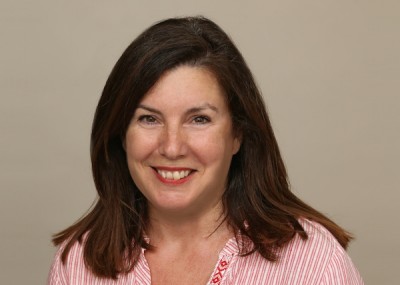
This is Yolanda Prieto Pardo, whose story outline LOS ALTOS VUELOS DE JOSEFINA was chosen in the Fiction without Friction contest we ran with Contec México and Ink it. She has won a lifetime subscription to Beemgee Premium. Furthermore, our friends at Ink it will publish the novel online all over the world in 85 countries.
Congratulations Yolanda!
The CONTEC/Beemgee “Fiction without Friction” call for stories
Many innovations relevant to authors of stories and “content” apply to publication and distribution. However, digital aids can also help creators right from the moment they have their first ideas.
With Beemgee.com, fiction authors have a tool that helps them organize their plots and develop their characters. When it comes to pitching the work to a publisher, a Beemgee project provides a powerful supplement to the traditional exposé.
For publishers and other content disseminating organizations, Beemgee is a new tool that increases productivity during the evaluation process and considerably improves the workflow between author and editor/producer/publisher.
To showcase this new approach, CONTEC and Beemgee are running a call for stories, which the ebook platform ink-it is supporting.
Turn your story into a book for sale in over 40 online stores! (more…)

Author and creative writing teacher Jesse Falzoi was born in Hamburg and raised in Lübeck, Germany. Back in the nineties, after stays in the USA and France, she moved to Berlin, where she still lives with her three children.
She has translated Donald Barthelme stories into German. Her own stories have appeared in American, Russian, Indian, German, Swiss, Irish, British and Canadian magazines and anthologies. She holds an MFA in Creative Writing from Sierra Nevada College.
Her new book on Creative Writing is released end of May 2017.
At the age of twenty-one I quit university and bought a one-way ticket to San Francisco, USA. I wanted to get far away from my first attempts to grow up. I wanted to get away from a frustrating relationship and boring courses and everything that was pushing me to take life more seriously. I didn’t have any plans what I would be doing in San Francisco but I had the address of an acquaintance I had made a year before. I went on a journey that was physical in the beginning and became more and more spiritual during the process. I bought a return ticket in the end and went back to my hometown just to pack my suitcases for good; I’d be staying in Germany, but I wouldn’t be staying home.
(more…)
Beemgee is holding free coaching sessions for authors at the Leipzig Book Fair 2017.
Submit your story outline by the 18th of March 2017. All you have to do is send us your Beemgee project. You stand a good chance of winning one of our 8 coaching slots of 40 minutes each!
We’ll give you free advice, tips and tricks about your story structure that will help you make your plot more dramatic and your characters more engaging – in person, live at the fair. Our help will focus on how you want to develop the material, whatever the genre or format.
What you have to do to win this prize:
Outline your story as a Beemgee project. It doesn’t matter whether you do this with a FREE project (TRY FOR FREE on www.beemgee.com) or with a PREMIUM account. Your content may be in English or in German. Your outline must have:
Send us an e-mail including the link to your project and your name to: story@beemgee.com. Alternatively, send the e-mail directly out of the web-app using the share function. (more…)
One of the world’s largest events in publishing.
From the 19th till the 21st of October 2016, Beemgee will be quite active at the Frankfurt Book Fair. Come see us! (more…)
Why You Have to Hurt the Characters You Love

Guest Post by Connor Rickett, 05/06/2015
Connor Rickett is a former professional scientist, current professional blogger and writer, travel enthusiast, lover of learning, and reluctant participant in social media. He is currently in the early stages of fortune and fame: debt and infamy.
Check out Cities of the Mind, his site for writers and freelancers looking to get better at what they do!
The Problem
All too often, the working writer finishes a draft of a story or book, only to find big stretches falling flat. There’s just something missing. It happens to published authors, too; I think of it as the “Second Book Curse”. This is where the writer has built a character, and things just work out a little too well for them. Sure, they’re challenged, put in mortal danger, thrashed a little bit, but, somehow, the tension from the first novel is gone. Most good writers seem to figure this out, and coming roaring back in the third book. Or maybe you just never read the ones who don’t.
But why does this happen? And, more importantly, how can you avoid it? (more…)








 Here at Beemgee, we’re into the thought behind the writing of stories more than the writing itself. So we’re all the more pleased that
Here at Beemgee, we’re into the thought behind the writing of stories more than the writing itself. So we’re all the more pleased that 











 By Silvia Li Sam
By Silvia Li Sam

 Nicole Boske heads the editorial team at
Nicole Boske heads the editorial team at 



 Guest post by Richard Sorg.
Guest post by Richard Sorg.






